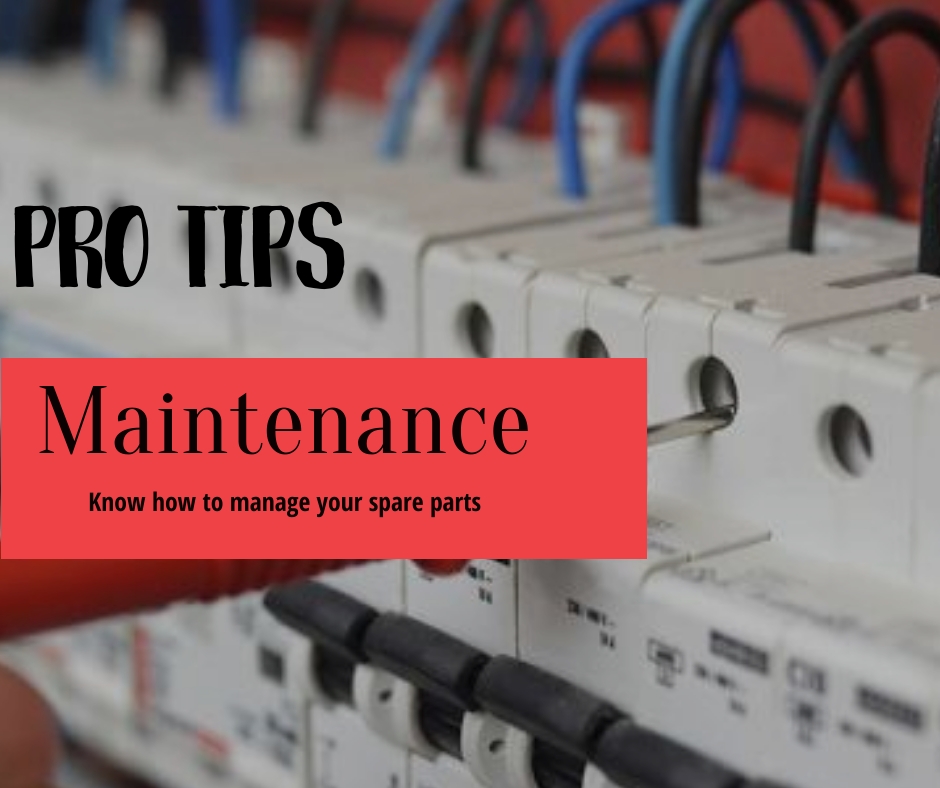Assembling, setting and maintaining the electrical spares
If someone asks “how to manage warehouse obsolescence”, “maintenance” can be the straight answer. Any equipment can fail, but failure rates can be controlled through proper maintenance.
The breaking down of the electrical spares is normally just as complicated as assembling it; all parts must be carefully taken apart, categorized and packaged for shipping. Machinery mechanics use technical manuals, have a deeper understanding of the equipment, and careful observation, to discover the cause of the problem.
After diagnosing the problem, the industrial machinery mechanic may disassemble the equipment to repair or replace the necessary parts. Increasingly, mechanics are expected to have electrical, electronics, and computer programming skills to repair sophisticated equipment on their own. After repairing, mechanics perform tests to ensure that the machine is running smoothly with the spare parts. The primary responsibilities of industrial machinery mechanics also include preventive maintenance.
For example, in spare parts like a circuit breaker, spring pressure should be maintained as per the manufacturer’s requirement.
Protective Relay, is one of the most dependable electric spares. When in operation the relay coil and terminal connectors should be checked. You can avoid the difficulties in coordinating the time for maintenance and production work by performing the maintenance work before start-up or during shutdown periods.
Maintenance activities include the following categories
Routine maintenance is conducted while spare parts or equipment are in service. These are the activities scheduled on a time-bound or meter-based schedule derived from preventive or predictive maintenance strategies. Some examples are visual inspections, cleaning, functional tests, and measurement of operating quantities, lubrication, oil tests and governor maintenance.
Maintenance testing is done by using test equipment, to assess the condition in an offline state. They may be scheduled on a time or meter basis but may be planned to coincide with scheduled equipment outages. Since these activities are predictable, some offices consider them “routine maintenance” or “preventive maintenance.” Some examples are governor alignments, balanced and unbalanced gate testing.
Diagnostic testing is performed by using test equipment to assess the condition of equipment after unusual events, such as equipment failure/ repair/replacement or when equipment deterioration is suspected. These activities are not predictable and cannot be scheduled because they are required after a forced outage. Some examples are governor troubleshooting, unit balancing, and vibration testing.
Manage your assets before extremity
❖ Continuous monitoring of critical assets (24×7), maintenance notifications and setting alarms, identify threats in quality of electrical spares, its availability and provides reports on asset’s condition.
❖ The maintenance of the record-keeping system must be kept current so that a complete maintenance history of every spare part are available, at all times.
❖ The availability of up-to-date drawings, to management and maintenance staff, is extremely important.
❖ Accurate drawings are not only very important to ongoing maintenance, testing, and new construction, but they also are essential during emergencies for troubleshooting.
Essential components to be maintained
● To ensure maintenance is carried out by a competent person (someone who has the necessary skills, knowledge, and experience to carry out the work safely).
● To maintain the electrical spare parts regularly – use the manufacturer’s maintenance instructions as a guide, particularly if there are safety-critical features.
● To provide the proper tools for the maintenance person.
● To allow the workers to report damaged or faulty equipment.
● To schedule maintenance to minimize the risk to other workers and the maintenance person, wherever possible.
● To make sure that maintenance is done safely, machines and moving parts are isolated or locked, and flammable/explosive/toxic materials are dealt with properly.








